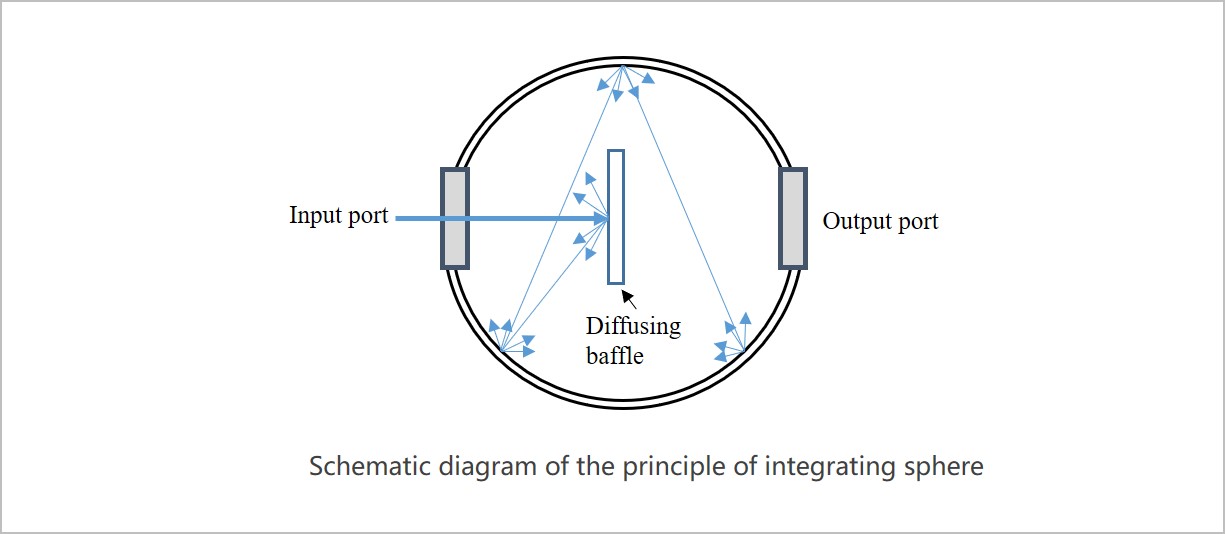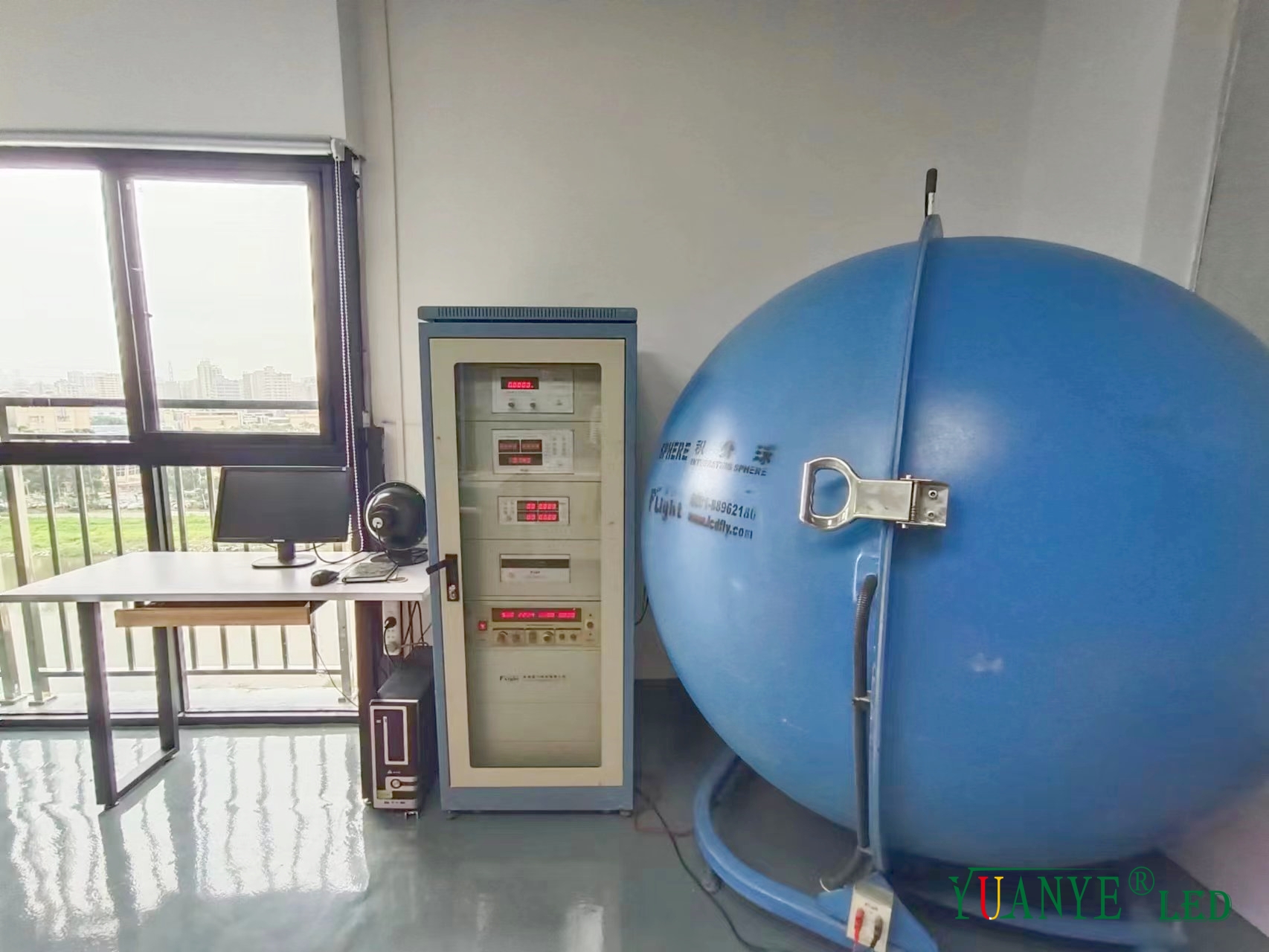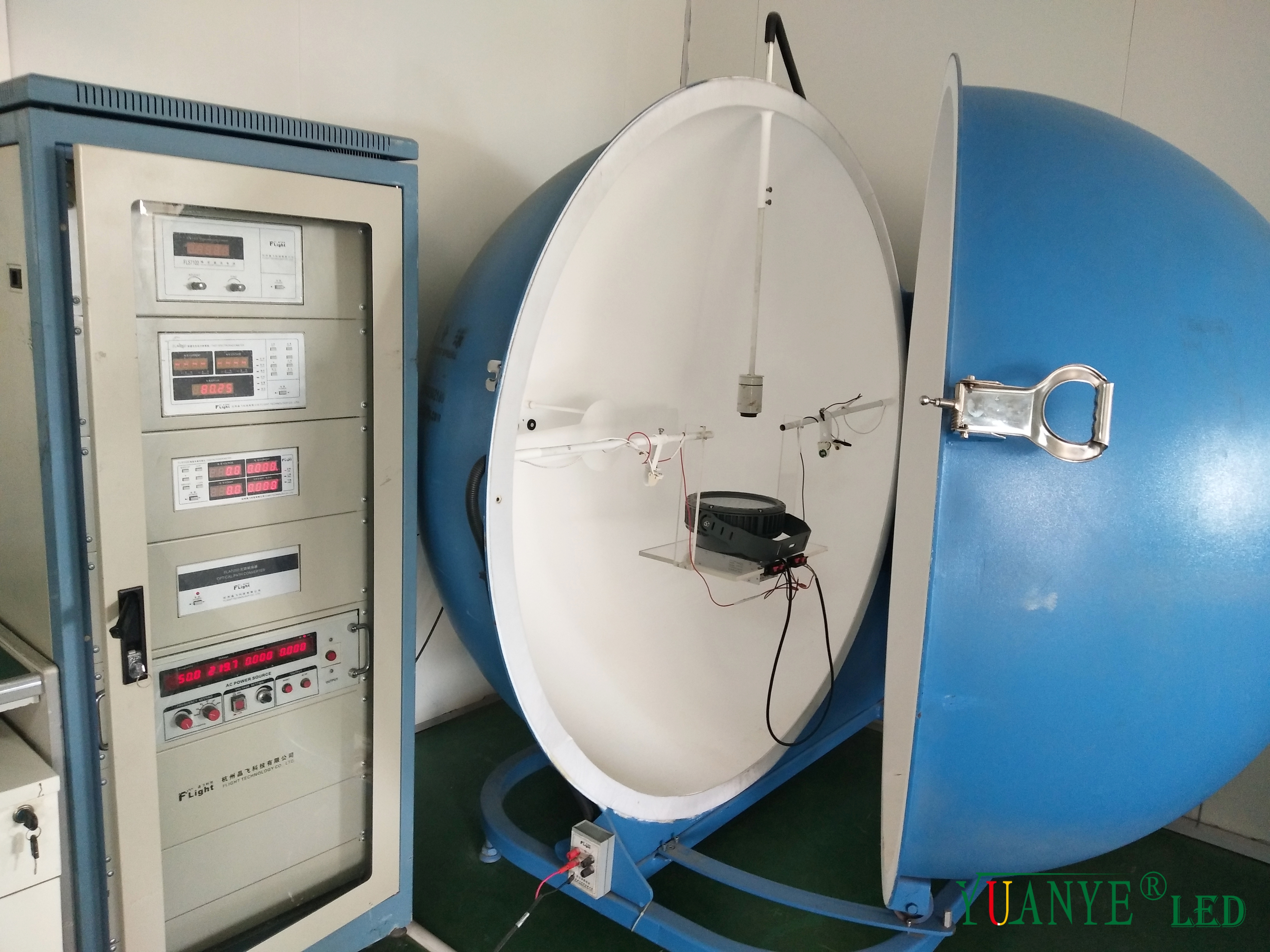Integrating Spheres: A generalist in optical research and measurement
The meaning of integrating sphere
The basic working principle of the integrating sphere is shown in the figure. After the light is incident by the input hole, the light is uniformly reflected and diffused inside the ball, so the light obtained by the output hole is a fairly uniform diffused beam. Moreover, the incidence Angle, spatial distribution and polarization of the incident light do not affect the intensity and uniformity of the output beam. Also because the light is emitted after the integration inside the integrating sphere, the integrating sphere can also be used as a light intensity attenuator. The ratio of the output intensity to the input intensity is about: the area of the light output hole/the surface area inside the integrating sphere.
Integrating sphere is an instrument specially designed for LED light color parameter measurement and spectral analysis. In recent years, LED light source has been widely used in various fields with its many advantages such as small size, low energy consumption, fast response, long life and so on. As an important LED testing and analyzing instrument, integrating sphere plays a great role in the rapid research and development of LED light source.

The function of integrating sphere
Integrating sphere is an optical performance measurement, the optical properties of materials, such as reflectivity, transmittance and absorptivity, can be accurately measured by using the integrating sphere. The optical parameters of the sample can be calculated indirectly by placing the sample at the entrance or exit of the integrating sphere and measuring the change of luminous flux in and out of the integrating sphere. This method has the advantages of non-contact, non-destructive and high precision, and is widely used in material science, thin film technology and other fields.
Measuring Luminous Flux
Integrating Sphere Spectrum Testers measure the total luminous flux emitted by a light source to help lighting engineers evaluate the brightness and light output of lighting equipment.
Determine Light Intensity Distribution
Integrating sphere testing determines the distribution of light intensity from a light source over an angle, helping to design the right optical system to achieve the desired lighting effect.
Determine spectral distribution
The tester can analyze the spectral characteristics of the light source, including the intensity distribution of different wavelengths of light, to determine the color temperature, color reproduction and spectral performance of the light source.
Evaluate the energy efficiency of the light source
By testing the light efficiency, beam uniformity and other parameters of the light source, you can evaluate the energy efficiency and energy-saving performance of the lighting system, and guide the optimal design of the lighting scheme.
The applications of integrating sphere
Materials Science
For measuring the reflectance, transmittance and absorbance of materials and studying the optical properties and quality of materials.
Optical design
For evaluating and verifying the performance of optical components (e.g., lenses, mirrors) and optimizing design parameters.
Lighting engineering
For testing the optical performance of various lighting instruments (e.g. LED lamps, fluorescent lamps) and determining parameters such as light intensity and color temperature.
Printing industry
Used to measure the color and quality of printed materials and help adjust ink, color and gloss.
Medical field
Used to study the effect of light on biological tissues, such as photodynamic therapy, spectral diagnosis, etc.


Reflectance
The ability of a material's surface to reflect light, usually expressed as a percentage or absolute value.
Transmittance
The ability of a material to transmit light, again expressed as a percentage or absolute value.
Absorbance
The ability of a material to absorb light, also usually expressed as a percentage or absolute value.
Color Parameters
Includes CIE XYZ Chromaticity Coordinates, Color Temperature, Color Difference, etc., which are used to describe the characteristics of a material's color.
Through these test results, users can understand the optical properties of materials and conduct various analyses and comparisons to guide product design, production and quality control work.
In summary, the integrating sphere spectral tester can help lighting designers evaluate the performance and design effect of the lighting system and optimize the lighting scheme to improve the lighting quality and energy saving effect in the lighting project. Through accurate measurement and analysis of various parameters of the light source, it can provide a scientific basis for the lighting project to ensure that the designed lighting system complies with the specification requirements and meets the needs of use.

Shenzhen Yuanyeled Co.,Ltd. is a professional company, was established in 2011 based in Shenzhen, China with over 10-year experience in LED lighting industry starting with LED encapsulation.
CONTACT US
Email: rice@yuanyeled.com
Tel: +86-19925346944
WhatsApp: +86-19925346944
ADD: Floor 8th, building 8, Langxia third industrial zone, Songgang town, Baoan district, Shenzhen city, China.












